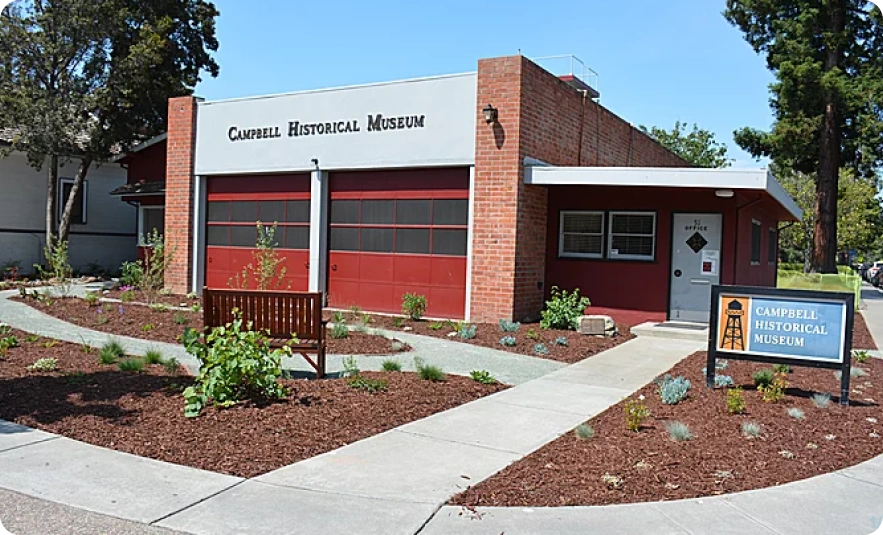
How Did eRecordsUSA Digitize Campbell Press to Preserve Santa Clara Valley History?
eRecordsUSA delivered a fully OCR-searchable, metadata-enriched digital archive with exhibition-grade image fidelity. Each file followed structured naming conventions and integrated seamlessly with the Museum’s internal systems. The digitized collection now powers educational outreach, curatorial research, and digital exhibits—ensuring the archive remains an accessible public asset for generations.
Project Snapshot
-
- Client: Campbell Historical Museum, City of Campbell, CA
-
- Location:51 N. Central Ave, Campbell, CA 95008
-
- Collection: Campbell Press newspaper archive
-
- Material: Fragile, archival-grade newsprint
-
- Formats Delivered:
-
- OCR-encoded PDFs with ALTO XML and word-level bounding boxes
-
- Uncompressed TIFF 6.0 files at 300–400 ppi, 8-bit greyscale
-
- Printable/downloadable PDFs with original page images
-
- Formats Delivered:
-
- Volume: 6,509 total pages, including 1,460 from two bound volumes
-
- Timeline: May–September 2024 (delivered in two batches)
-
- Usage: Internal research, public digital access, exhibition printing
Core Challenges
-
- Fragile Newsprint Handling: Brittle pages required non-contact scanning to prevent damage, aligning with archival preservation standards for rare and delicate collections.
-
- Low OCR Accuracy from Print Defects: Skewed columns and faded ink reduced raw OCR output, requiring post-processing refinement.
-
- Strict Metadata and File Naming Compliance: Files had to follow the Museum’s taxonomy and NDNP-aligned metadata standards with zero deviation.
-
- Exhibition-Ready Image Fidelity: Resolution needed to support large-format, display-grade output without quality loss.
-
- Long-Term Preservation Formats: Digital formats were selected to meet current access needs and future archival durability.
-
- High-Volume Coordination: 6,500+ pages required structured batching and consistent QA across delivery cycles.
-
- Digital Integration with Museum Systems: All files had to be formatted for seamless import into the Museum’s digital asset systems and archival catalog.
Solution
-
- Flatbed Archival Scanning: Non-contact methods protected fragile newsprint during digitization.
-
- OCR Optimization: Alignment and contrast tuning improved text recognition accuracy.
-
- File-Naming Precision: Museum-defined naming schema executed without deviation.
-
- NDNP Metadata Embedding: Included key fields such as scanner ID, paper title, issue/date, and page sequence.
-
- Metadata Logging: Every file logged to support archival traceability and system compatibility.
-
- Duel Formats Delivered: High-res PDFs for access; TIFFs for long-term storage.
-
- Exhibit-Grade Resolution: Files suitable for large-scale reprints and public display.
-
- Batch QA Protocols: Structured review ensured consistency across file sets.
-
- System-Ready Assets: Files optimized for seamless museum archive integration.
How Did the Campbell Museum Preserve Civic Memory Through Digitization?
eRecordsUSA enabled modern preservation with:
- OCR-Searchable Access: Researchers can now search full text by keyword without handling fragile originals.
- Metadata-Tagged Files: Each PDF includes headline, issue date, and page number, supporting instant retrieval via the museum’s digital asset manager.
- Zero Handling Risk: High-resolution scans eliminate contact with brittle newsprint, preserving originals for the long term.
This digital archive modernizes access while securing historical integrity for future researchers, educators, and the public.
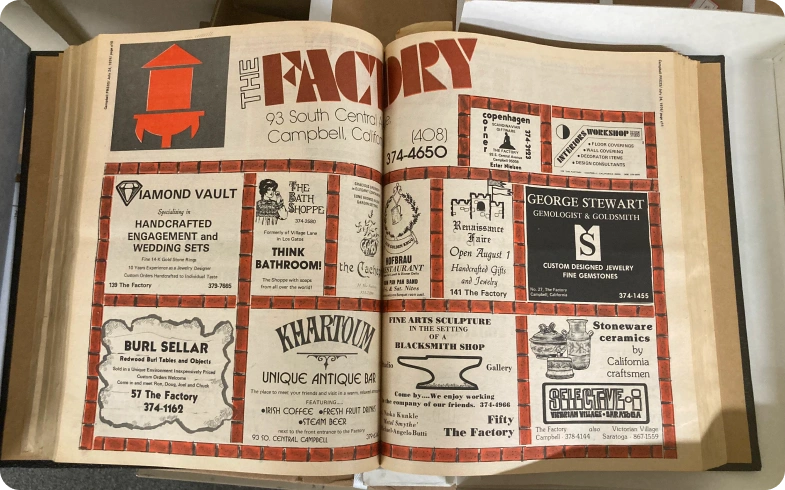
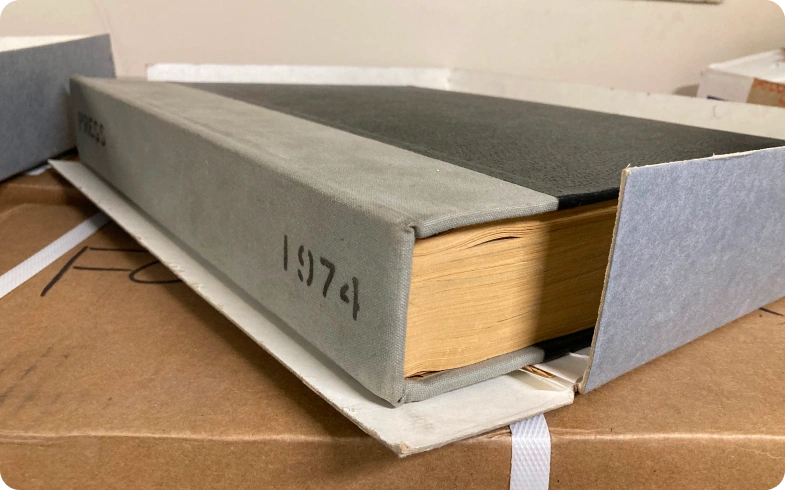
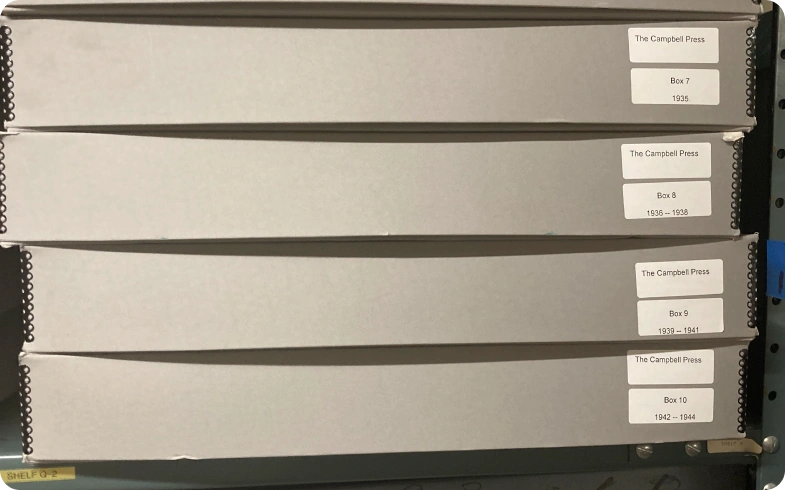
What Challenges Did eRecordsUSA Face While Digitizing the Campbell Press Archive?
- Fragile Newsprint: Pages tore easily under their own weight. Non-contact flatbed scanning with custom cradles preserved paper integrity.
- Print Defects: Skewed headlines and faded ink reduced OCR quality. Image normalization improved alignment and contrast for >98% accuracy.
- Strict Metadata Standards: Each file required page-level tags—title, date, and folio—aligned with the museum’s controlled vocabulary.
- Rigid File Naming Rules: Ingest scripts required exact naming (e.g., YYYY-MM-DD_pg##). Typos could break automation.
- Exhibition-Grade Imaging: Scans needed 400+ dpi resolution and color calibration to support reprints and large-format displays.
- Dual-Format Delivery: Each page was delivered in both searchable PDF for use and uncompressed TIFF for preservation.
- Direct DAM Integration: Assets had to plug directly into the museum’s digital asset manager with pre-validated checksums and folder trees.
- Deadline-Driven Execution: Project delivery had to align with the museum’s exhibit launch schedule.
- Layout Variability: Shifts in typography, column count, and layout across decades required adaptive OCR tuning.
- Multi-Department QA: Archivists, curators, and IT teams reviewed batches. QA included version control and approval logs.
How Did eRecordsUSA Digitize the Campbell Press for Preservation and Access?
- Flatbed Capture: Used archival-grade flatbed scanners with custom cradles at 400 dpi, 24-bit color.
- → Protected fragile pages and delivered distortion-free scans.
- Image Preprocessing: Applied deskewing, contrast correction, and noise reduction.
- → Achieved >98% OCR accuracy, even on degraded ink.
- Decade-Specific OCR Profiles: Tuned settings for each typographic era.
- → Ensured accurate keyword search across all publication years.
- Metadata Embedding: Injected Dublin Core and MARC-compatible fields for title, date, and page.
- → Enabled instant search and indexing within the museum’s DAM.
- Automated File Naming: Applied YYYY-MM-DD_pg## logic at export.
- → Eliminated manual errors and supported instant ingest.
- Exhibit-Quality Output: Delivered uncompressed 400 dpi TIFFs and searchable PDFs.
- → Met NARA/NDSA standards for long-term storage and public display.
- Batch-Level QA: Used checksums, visual inspections, and OCR verification.
- → Guaranteed uniformity before each delivery cycle.
- Standards-Based Packaging: Folder structure aligned with museum taxonomy and included metadata manifests.
- → Allowed drag-and-drop integration into the museum’s archive.
- Weekly Team Reviews: Collaborated with museum archivists and IT staff in real time.
- → Enabled fast iteration and ensured no surprises at final delivery.
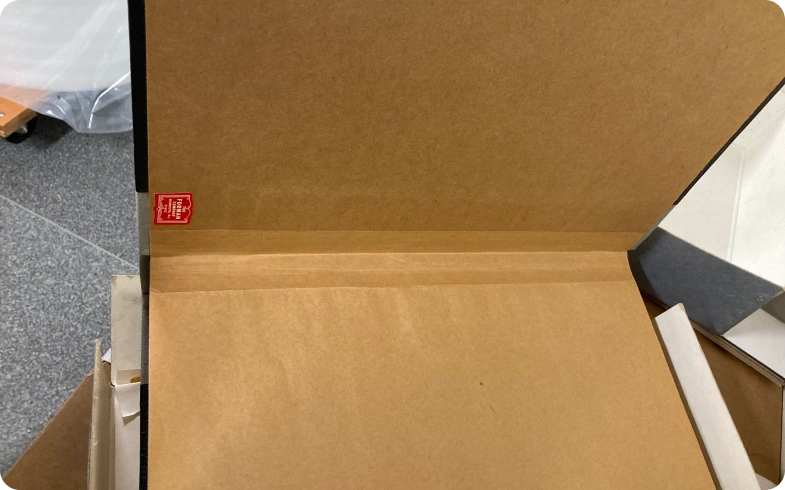
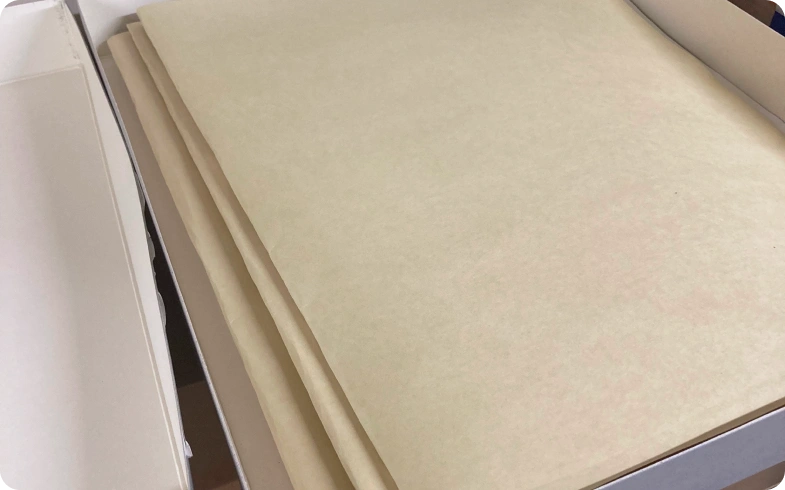
Measurable Outcomes
- 99%+ OCR Accuracy: Achieved over 99% keyword match across 50 randomly sampled issues using ALTO-based OCR with word-level bounding boxes.
- 100% File-Naming Precision: All assets followed the museum’s required naming schema with zero errors.
- Zero Page Damage: No physical degradation reported during or after scanning.
- Exhibit-Ready Deliverables: Digitized pages featured in the museum’s “Campbell Through the Headlines” exhibit.
- 70% Reduction in Staff Research Time: Manual browsing replaced with instant, full-text search access.
Result: The Campbell Historical Museum received a searchable, preservation-grade newspaper archive—with full metadata and file integrity—ready for public access and permanent storage, with zero need for post-delivery rework.
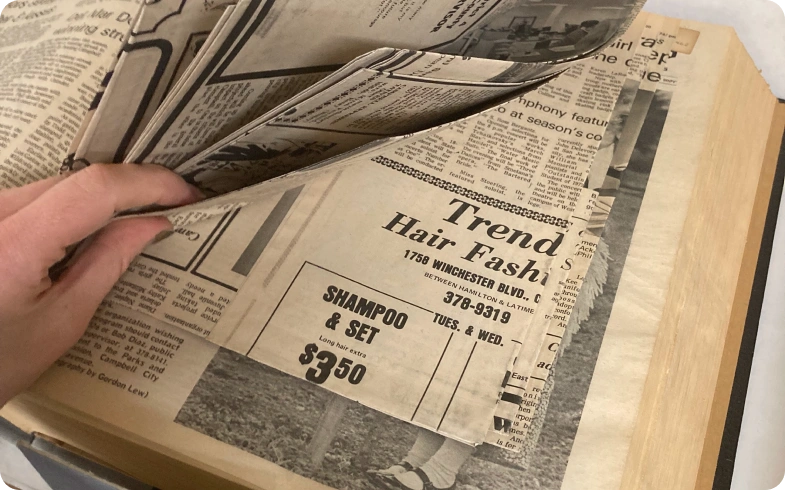
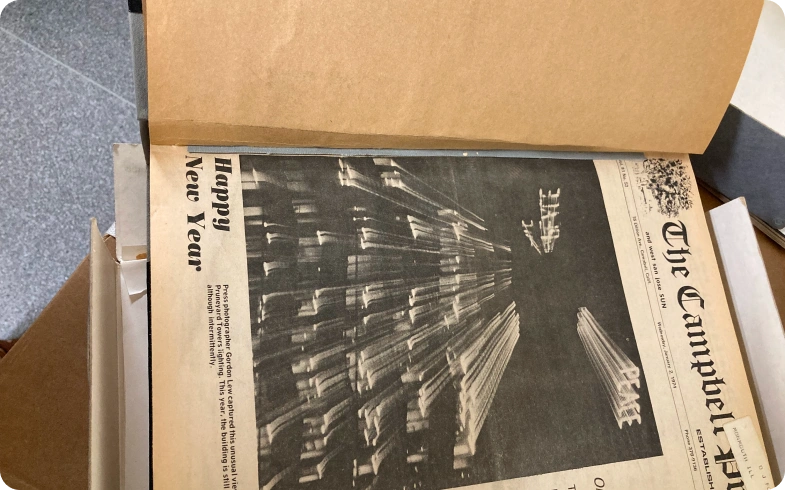
How Did Digitization Reshape the Campbell Museum from Paper Silos to a Searchable Archive?
Before Digital Preservation:
- Preservation Was Reactive: Climate control and careful handling were the only protection methods.
- Manual Research Required: Staff had to locate boxes and pages for each visitor query.
- Disconnected Workflows: Curators, IT, and educators worked in separate systems with minimal data sharing.
- Low Measurability: The archive’s value was difficult to demonstrate to funders or sponsors.
- Limited Access: Project planning and exhibit development were constrained by the fragility of original materials.
After Archival Modernization:
- Proactive Digital Preservation: Version-controlled, redundant digital storage protects the full collection.
- Self-Serve Search: Researchers use keyword search with no staff mediation, reducing query time dramatically.
- Unified DAM System: One platform now connects exhibits, archives, and tech teams using the same indexed assets.
- Trackable Archive Impact: Usage metrics, download stats, and public access logs demonstrate real value to stakeholders.
- Desktop Exhibit Planning: Curators can build storyboards and proposals using instantly accessible, high-resolution digital records.
Bottom Line: Digitization transformed the Campbell Press archive from a fragile, analog silo into a dynamic, accessible, and fundable digital asset—perfectly aligned with modern museum strategy.
How Does the Campbell Museum Benefit from a Digitized Campbell Press Archive?
- Instant Keyword Search: Staff and researchers now search 40+ years of local news in seconds, powered by OCR with word-level bounding boxes—cutting lookup time by 70%.
- Permanent Heritage Protection: Uncompressed TIFF masters eliminate handling risks and ensure long-term resilience against fire, water, or material decay.
- Exhibit-Ready Files: 400 dpi scans feed directly into digital or print exhibitions—no rescanning or manual image correction required.
- Community Engagement: The public-facing portal enables local schools, historians, and journalists to explore curated content and run keyword-based research.
- Operational Efficiency: Standardized metadata and NDNP-aligned filenames make every page searchable by date, issue, or scan ID—streamlining requests and workflows.
- Stronger Grant Positioning: Download metrics and usage logs demonstrate archive value, supporting grant applications and sponsor engagement.
- Future-Proof Storage: The archive integrates with the museum’s DAM and complies with FADGI and NARA standards—ensuring sustainability and system-wide compatibility.
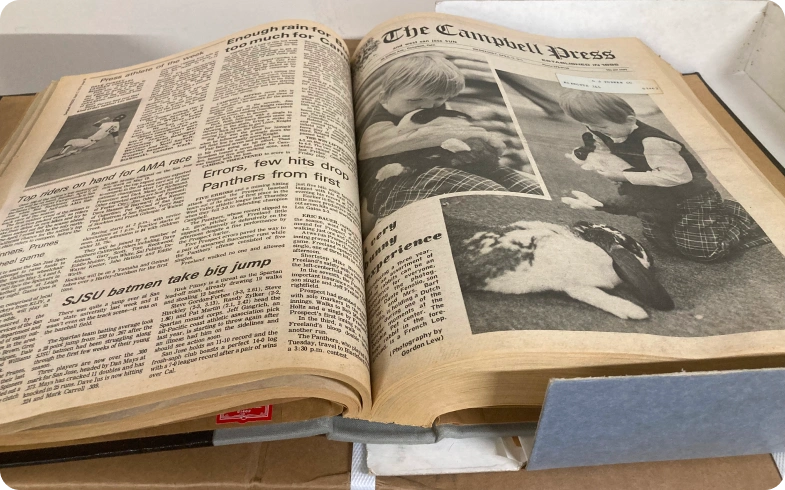
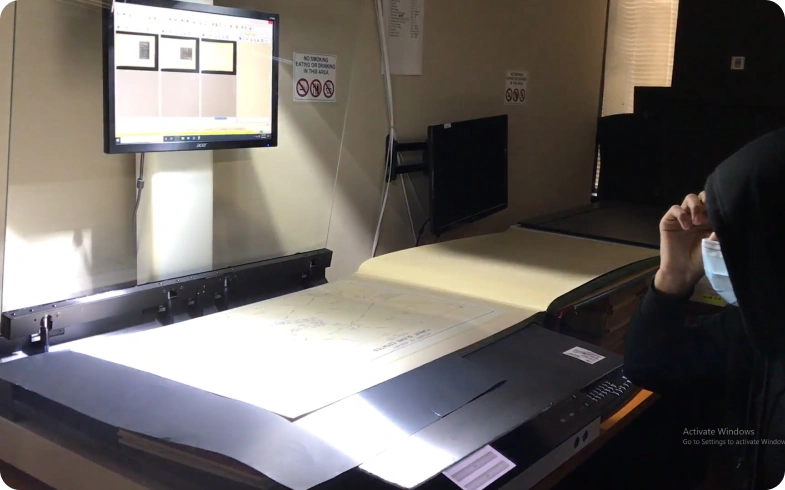
Final Impact
With a fully searchable and preservation-grade digital archive, the Campbell Historical Museum now serves a digitally native public and upholds its mission to safeguard Santa Clara Valley’s civic history. This transformation protects irreplaceable records and empowers new generations of educators, researchers, and community storytellers.
Client Testimonial
“eRecordsUSA delivered exactly what we asked for—OCR-ready files named to our specs and scanned at exhibition quality. We’re already using the archive for research and public programming.”
— Campbell Historical Museum, City of Campbell, CA
Ready to Digitize Your Rare or Fragile Museum Archives?
Our specialty includes archival newspaper digitization, rare collection scanning, and digital preservation services for both public institutions and private archives.
The Campbell Museum project is one of many that reflect our commitment to archival accuracy, metadata integrity, and long-term digital sustainability.
Secure your collections. Expand public access. Trust eRecordsUSA.